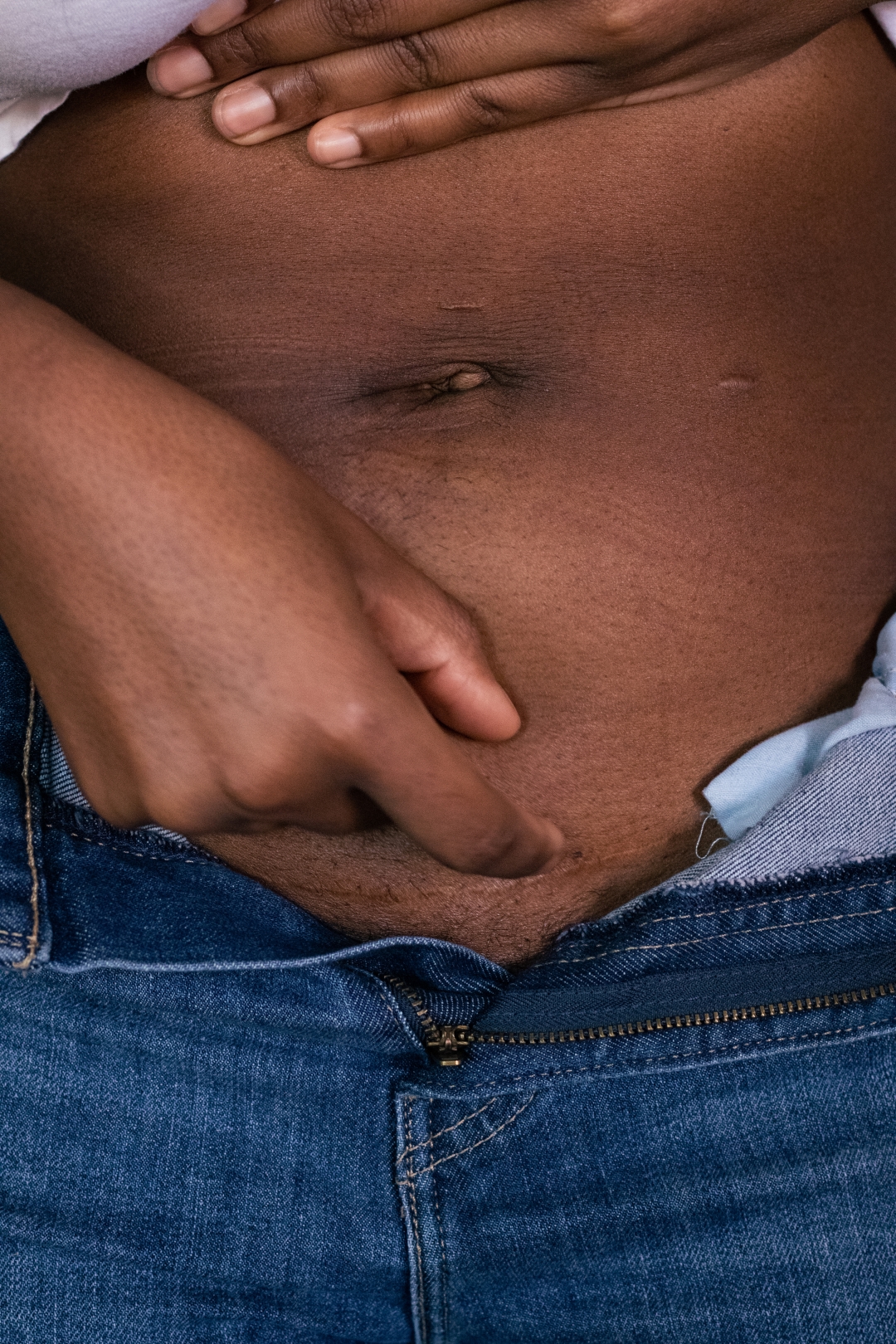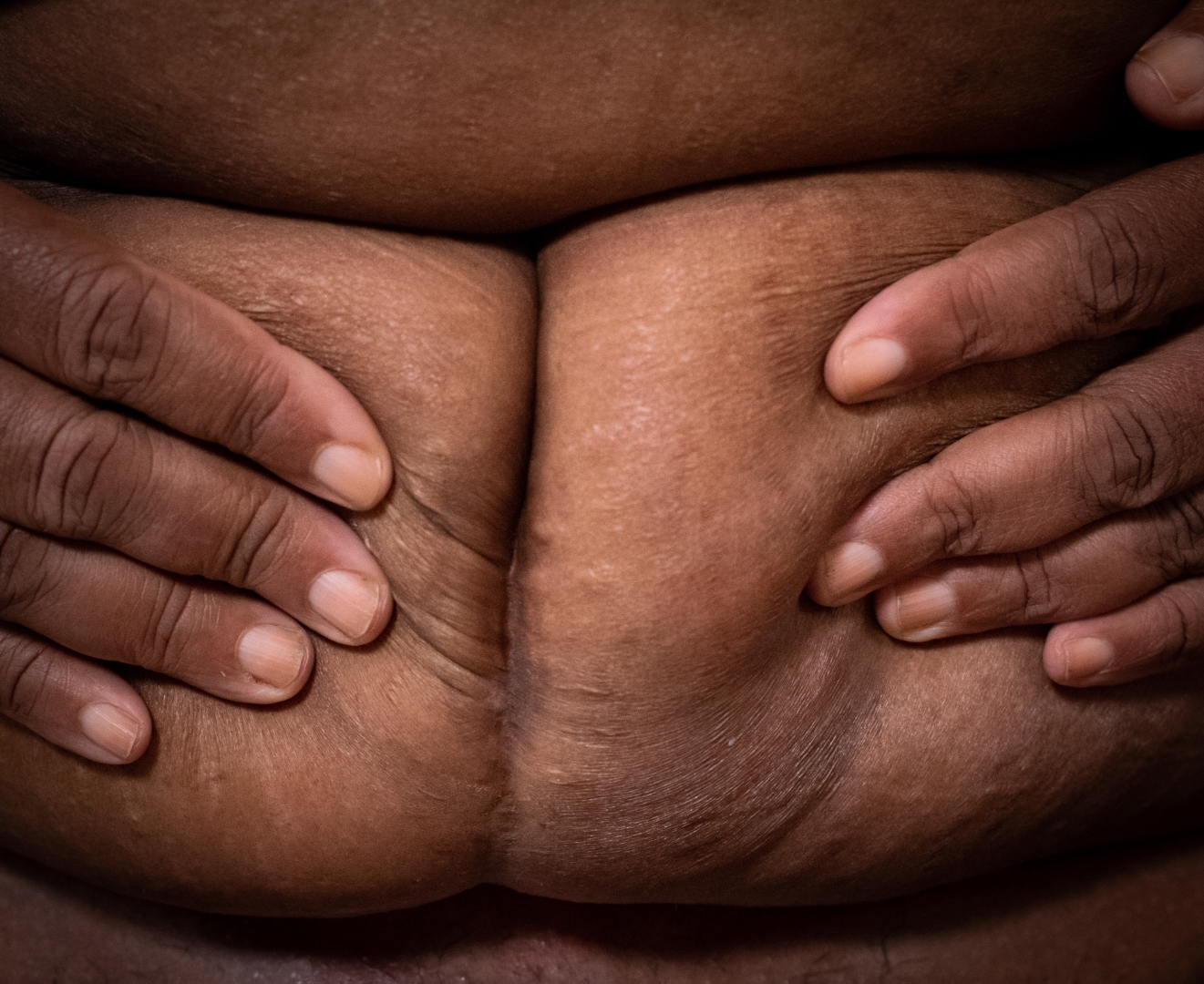
When the Womb Is Tender
Wildfruit Projects, 2023
Wildfruit Projects, 2023
Select installation views and images used in the show are below.
When the Womb Is Tender is a photography project about the disparate impact of uterine fibroids or UF on Black/African-American and Latin/Hispanic women. These groups are most affected by UF, which are non-cancerous tumors found outside and sometimes inside the uterus. I have had three surgeries to remove UF, so this is also a personal story. There is a significant physical and mental toll of having UF, such as heavy and painful periods, frequent urination, weight gain, and depression. Unfortunately, due to biases within the healthcare system and the encounters women of color have had with physicians who do not believe their pain, women tend not to address these issues until it becomes emergent. By then, a hysterectomy (a procedure to remove the entire uterus) is necessary to preserve their quality of life.
The goal is that this project increases awareness, motivates women to be more proactive about their reproductive health, and ignites scientists and researchers to further hone in on this issue. I have learned that not talking about these things with providers or even each other results from cultural beliefs and practices that may need some course correcting and unlearning. I hope that people will walk away with more education about UF, the social, economic, and mental impacts this has on women of color, and greater advocacy for reproductive rights.
Artist statement for When the Womb Is Tender:
Tenderness holds two capabilities: one that expresses pain when touched and one that expresses nurturance in response to that pain. These two instincts are formulated and built to alert the consciousness that something is hurt and requires care. In the context of When the Womb Is Tender, we see the progression of this instinct as it evolves. Uterine fibroids can exist for some time in the womb before showing any signs or symptoms. These signs can be a heavier-than-usual cycle or worsening period cramps. For some, these non-cancerous tumors cause no issues and calcify in the uterus. For many, it causes unbearable pain, fatigue, and depression. You may know some of these people and yet not know that they go to lengths to disguise their condition. These people tend to their bodies seemingly around the clock to ease and subdue their discomfort. This journey comes with intense feelings of embarrassment and shame. The transition from symptoms to bulging and then to scars, as evidenced by surgical procedures, is very challenging and can often feel like navigating a choppy tide in a canoe with only one ore. Then there is the work of proactiveness, the constant worry, and the bias within a failing healthcare system that lies in the scope of being a black or brown person in America. There is post-operative depression, body dysmorphia, and in many cases, coping with the new reality of never bearing children.
While everyone’s journey is different, they share a familial relationship with tenderness in the womb. This relationship traverses between the sufferer (self) and the carer (also self) for months and sometimes years. Deeply consider the vulnerability before you and the incredible strength required to be intimate and share this tendering with you. With this, I offer a phenomenon for the tender womb that we say in unison: I joyfully receive the mending of my body. And so it is.
This project is supported by Shift Consulting, LLC, The Puffin Foundation, Ltd., and Black Women Photographers in partnership with Nikon USA.
Images for WTWIT were printed on a napped polyester. This allowed for movement on the image itself, where the napped material could be manipulated or “tufted” to create dimension within the photo itself. In addition to this manipulation, because the canvas of the material’s color is white with digitally printed colors on top, brushing the material produced a “grain-like” finish to the portraits, giving them the appearance of an analog photo (all images were captured on digitally). Lastly, this fabric choice intentionally represented the tenderness, which is the basis for this body of work. Additionally, printing on fabric allowed for greater color saturation and a flat mattte appearance to the image which reduced glare under gallery lighting; the material itself is soft in a figurative way.




